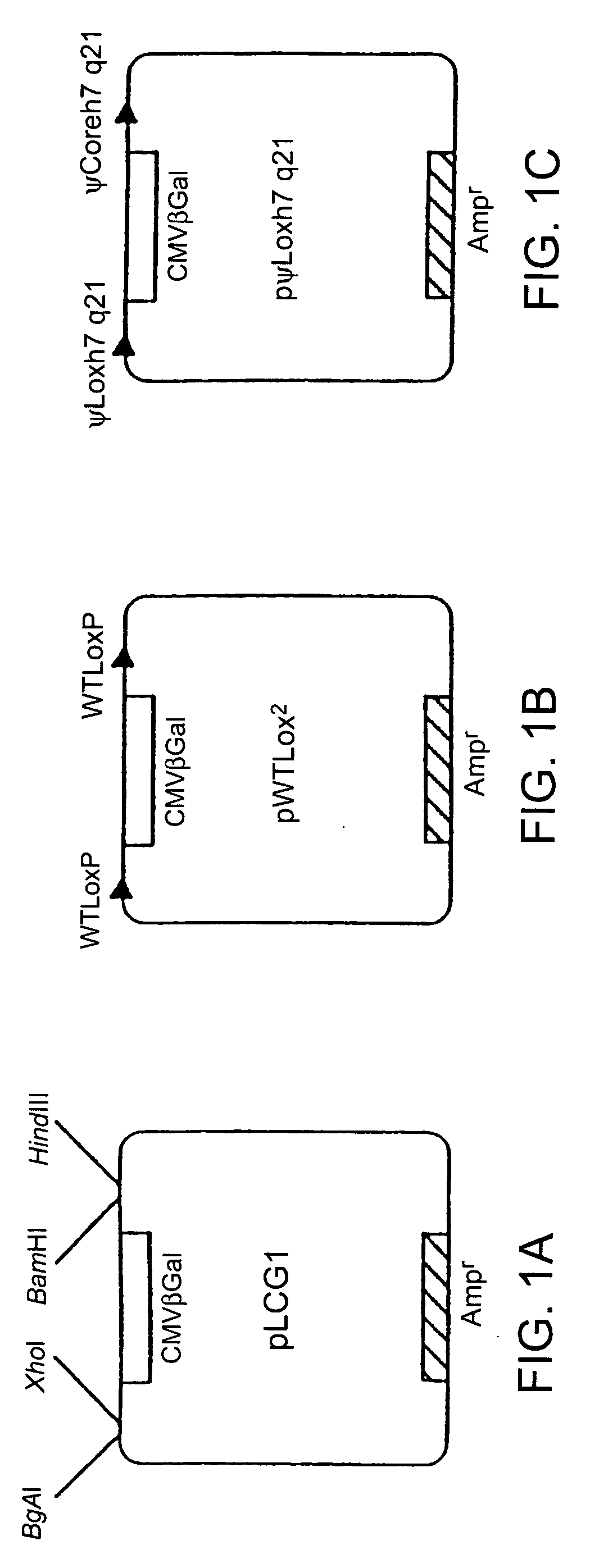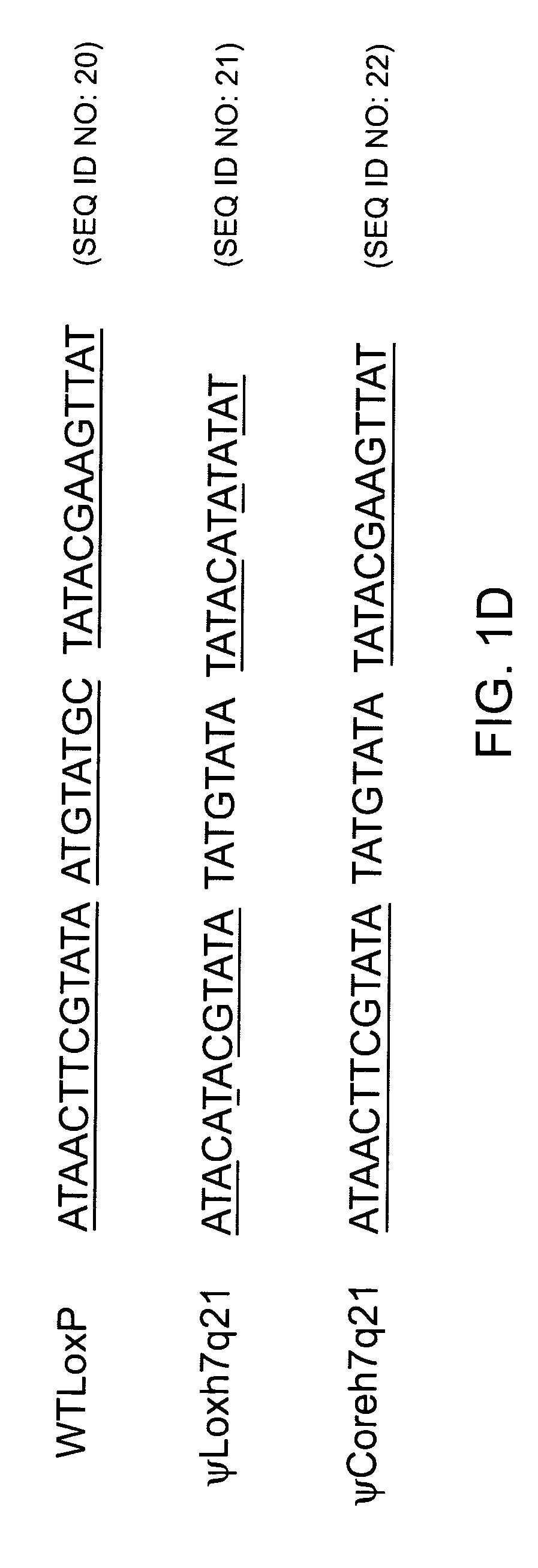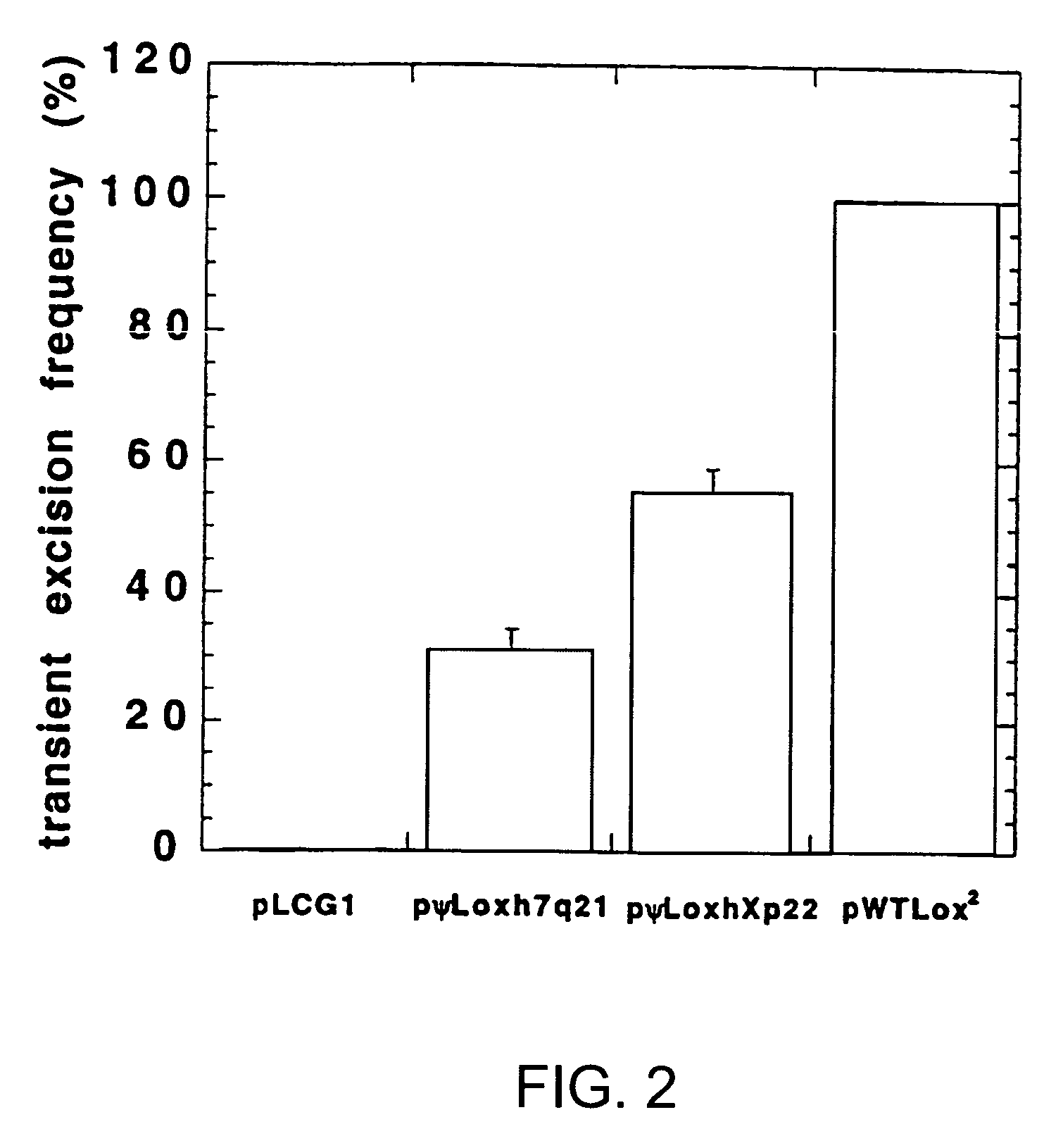Methods and compositions for genomic modification
a technology of genomic modification and composition, applied in the field of methods and compositions for genomic modification, can solve the problems of limiting the usefulness of the technique, affecting the safety of the procedure,
- Summary
- Abstract
- Description
- Claims
- Application Information
AI Technical Summary
Benefits of technology
Problems solved by technology
Method used
Image
Examples
second embodiment
[0136] In one embodiment, the genetically engineered cells of the invention contain any one of the nucleic acid constructs of the invention. In a second embodiment, a recombinase that specifically recognizes recombination sequences is introduced into genetically engineered cells containing one of the nucleic acid constructs of the invention under conditions such that the nucleic acid sequence(s) of interest will be inserted into the genome. Thus, the genetically engineered cells possess a modified genome. Methods of introducing such a recombinase are well known in the art and are discussed above.
[0137] The genetically engineered cells of the invention can be employed in a variety of ways. Unicellular organisms can be modified to produce commercially valuable substances such as recombinant proteins, industrial solvents, industrially useful enzymes, and the like. Preferred unicellular organisms include fungi such as yeast (for example, S. pombe, Pichia pastoris, S. cerevisiae (such as...
example 1
Identification of Pseudo-Recombination Sequences
[0174] The following example describes the identification of pseudo-loxP sequences by computer search. Similar procedures can be used to identify other pseudo-recombination sequences.
[0175] The findpatterns algorithm of the Wisconsin Software Package Version 9.0 developed by the Genetics Computer Group (GCG; Madison, Wis.), was used to screen all sequences in the GenBank database (Benson et al., 1998, Nucleic Acids Res. 26, 1-7). Default parameters are given below. Patterns resembling the wild-type loxP sequence, called pseudo-loxP sites (.psi.lox) herein, were sought. The results from two different search strategies (Patterns #1 and #2, see below) were pooled.
[0176] The wild-type loxP site is 34 base pairs long and consists of two identical thirteen-basepair palindromes, separated by an eight-basepair core. It has been demonstrated that, while strand cutting and exchange take place in the eight-basepair core, the DNA sequence of most ...
example 2
In vitro Excision Assay of Pseudo-lox Sites in Bacteria and Human Cells
[0186] The following example demonstrates that the pseudo-recombination sequences of the invention are functional as sites for recombination of a nucleic acid sequence by a site-specific recombinase.
[0187] A negative control plasmid, pLCG1 (FIG. 1A), was created by inserting a 4.3-kb XbaI-BspHI fragment containing the lacZ gene, encoding .beta.-galactosidase, driven by the CMV promoter (from pCMVSPORT-.beta.gal, Gibco / BRL) into the EcoRV site of pLitmus29 (New England Biolabs, Beverly, Mass.) in the opposite orientation to the LacZ.alpha. gene already present in the plasmid. This plasmid was then used as a base for the construction of other plasmids used in the excision assay. A very similar negative control plasmid, pL2.beta.50, was used in some of the experiments in place of pLCG1. Briefly, annealed oligonucleotides containing the lox sites being tested and a marker restriction enzyme site were directionally cl...
PUM
| Property | Measurement | Unit |
|---|---|---|
| resistance | aaaaa | aaaaa |
| capacitance | aaaaa | aaaaa |
| volume | aaaaa | aaaaa |
Abstract
Description
Claims
Application Information
 Login to View More
Login to View More - R&D
- Intellectual Property
- Life Sciences
- Materials
- Tech Scout
- Unparalleled Data Quality
- Higher Quality Content
- 60% Fewer Hallucinations
Browse by: Latest US Patents, China's latest patents, Technical Efficacy Thesaurus, Application Domain, Technology Topic, Popular Technical Reports.
© 2025 PatSnap. All rights reserved.Legal|Privacy policy|Modern Slavery Act Transparency Statement|Sitemap|About US| Contact US: help@patsnap.com



